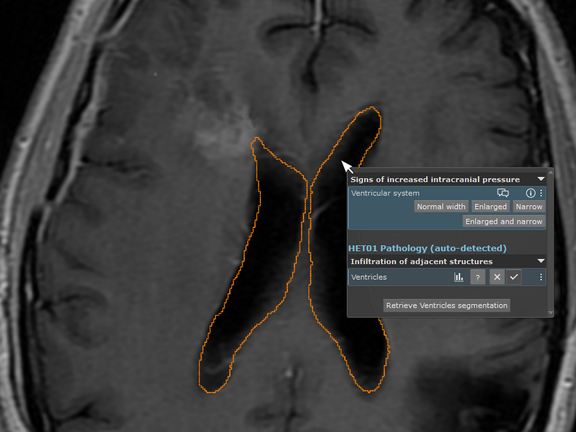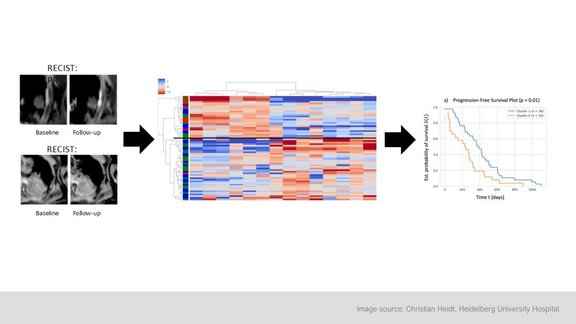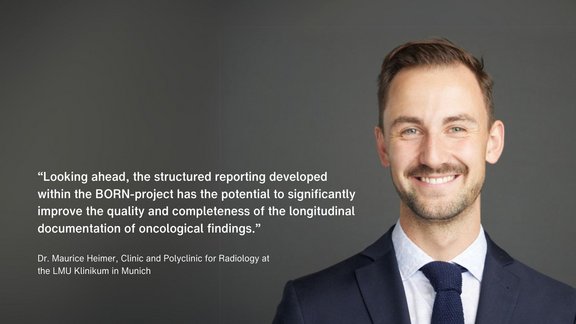More automation within mint Lesion™? Automated context-dependent template selection, filtering of relevant questions or even fully automated organ and lesion volume segmentation? Those features are all closer than ever.
Last March, Mint Medical was acquired by Brainlab, a leader in image-guided surgery and radiotherapy. Brainlab planning and intra-operative applications have long been powered by its Anatomic Patient Model – a multi-modal, biomechanical, AI- and Atlas-based simulation of an individual patient’s anatomy.
We now have connected the Anatomic Patient Model (APM) to mint Lesion™. The APM was made available through the Brainlab subsidy Snke OS, which set out to build an open health-tech platform around the Brainlab core technology frameworks.
One of our first prototypic use cases is image/structure-aware filtering of questions/templates: By clicking on an anatomic structure inside the viewer, mint Lesion™ automatically detects the structure within the slice set and suggests the relevant questions. Another use case is the automated detection and full segmentation of cranial lesions, for effortless volumetric tumor monitoring applications. However, this is just a teaser of the functionalities that will be bound to come.
If you are curious and would like to try our first steps to automate mint Lesion™ with the Anatomic Patient Model, discuss the use cases you would like to see, or even want to leverage the APM in your own software application, visit us at one of our booths at the RSNA.

„Anatomical GPS“ for mint Lesion™: Leveraging the Snke OS/Brainlab Anatomic Patient Model to drive anatomic-context-awareness and automation within mint Lesion™
Related Resources
Related Resources

Heidelberg University Hospital: Delta-Radiomics Features from ADC Maps as Early Predictors of Treatment Success in Lung Cancer Therapy
In this prospective study conducted by Heidelberg University Hospital, researchers investigated whether changes in radiomic features from…

Healthcare on FHIR: Igniting the Potential of Interoperability
Interoperability plays a crucial role in healthcare: it enables seamless communication of patient information across different systems, leads to…

Insights into the BORN Project: Development and Successes with Dr. Maurice Heimer
The BORN-project of the Bavarian Center for Cancer Research (BZKF) is making swift progress in its second funding phase. A key aspect of the project…